Propeller Guards Increase Cross Sectional Area And Thus Increase Risk of Injury?
Is the Additional Cross Sectional Area of a Propeller Guard a Significant Hazard or is the Industry Grasping at Straws?
The boating industry has long cited the increased cross sectional area of propeller guards vs. the cross sectional area of an open propeller as an added risk. They say the increased area would result in blunt trauma injuries to people that would have just missed being struck by the propeller. The industry claims this added risk overwhelms any possible benefits provided by the propeller guard in recreational boating applications at speeds above just a few miles per hour.This post discusses five major flaws in the boating industry’s argument.
1. The math behind the boating industry’s historical calculations was wrong.
2. They neglect the cross sectional area of the boat hull.
3. The industry encourages higher horsepower drives and their associated larger diameter propellers.
4. They encourage twin and triple drives.
5. They can cite no examples of near miss propeller strikes that would have hit a propeller guard.
The Boating Industry’s Initial Cross Sectional Area Ratio Calculations Were Exaggerated
One of the earliest times the increased cross sectional area issue was quantified was in a December 15, 1980 letter from Richard (Dick) Snyder of Mercury Marine to Al Marmo at the U.S. Coast Guard. On page 3 of that letter Mr. Snyder made these calculations based on the Balius propeller guard. The 13.5 in diameter propeller Mercury was using on the drive had a cross sectional area of 143 in.sq.. 24 sq.in. of that was already covered by the gearcase (leading edge of the drive, torpedo, cavitation plate, etc.). Which leaves 119 sq.in. (143 sq.in. – 24 sq.in.) added by installing the propeller.The Balius guard was well known for being a huge basket. Mr. Snyder writes that it was 20 inches wide by 18 inches tall with a cross sectional area of about 360 in.sq. In his letter Mr. Snyder said the guard had over 2.5 times the frontal area of the propeller. While that may be true, he failed to note this guard had several times the blade tip clearance of other propeller guards. A traditional propeller guard for a 13.5 inch diameter would be of the nature of 15 inches in external diameter at the propeller with a cross sectional area of about 177 sq.in.. This conventional propeller guard would have an area ratio of about 1.25 (177 sq.in./143 sq.in.) vs. the 2.5 ratio he supplied to Al Marmo.
Mr. Synder’s exaggerated 2.5 to 1 cross sectional area ratio was embellished even further by the time it was printed in the 1989 U.S. Coast Guard National Boating Safety Advisory Council (NBSAC) Propeller Guard Subcommittee final report. Mr. Snyder supplied his data to subcommittee Chairman, Jim Getz. The 1989 NBSAC report said the ratio of cross sectional areas of a propeller guard to the propeller was 3 to 1 (pages 13-14) and repeatedly referred to the dangers created by this additional area.
We marked the incremental area added by a propeller guard in red on the earlier 1989 NBSAC report sketch.
Side comment- we wonder what difference a little truth here (area ratio of guard to the portion of its area already covered by the propeller and drive was really 1.25 instead of 3.0) AND the proper propeller strike accident statistics (Dick Snyder provided Event 1 only statistics to the 1989 subcommittee Chairman and told him they represented the total number of accidents) would have made in the recommendations of the subcommittee on propeller guards.
What About the Boat Hull?
The boating industry says its too dangerous to add a few square inches to the frontal area of a propeller by extending the hazardous area out to the perimeter of the propeller guard, but they already have a boat hull in the water. If propeller guards are unsafe for adding a few square inches of machinery in the water, they should not be operating boats because boat hulls add much more surface area than propeller guards.
What About Higher Horsepower Outboards and Larger Diameter Propellers?
Boating advertisements encourage the use of high horsepower outboards. If frontal cross sectional area of submerged machinery is a problem, why promote larger outboards with greater submerged area themselves, that also require larger diameter propellers?
Twin Drives
Boating magazines are brimmed full of boat and drive manufacture ads showing twin outboards, triples, and even quads. Mercury seems particularly fond of showing triple Verado installations. More is better. What happened to more machinery underwater being dangerous? They could not add a propeller guard because it increased the cross sectional area by less than 25 percent (ratio was about 1.25, actual increase was less due to some of the added area being added being already covered by the drive). But they encourage customers to throw on another outboard or two (each one being a full 100 percent increase in frontal cross sectional area of a single drive).They Cannot Identify a Single Instance in Which Someone Was Just Missed by the Propeller But Would Have Been Hit by a Guard
The boating industry continues to rant about the extreme danger of the incremental additional cross sectional area added by a propeller guard. In the Brochtrup case, the industry’s leading expert witness propeller guard test guru, Robert Taylor, was repeatedly asked to identify instances in which someone was nearly missed by the propeller, but would have been hit by a propeller guard. Mr. Taylor was unable to identify even a single instance. Reference: Robert Taylor April 24, 2008 deposition in the Brochtrup case pgs.189-191.
Summary
So here we are. The industry tells us the additional cross sectional area added by a propeller guard makes guards too dangerous to use. The industry then exaggerates the increase in cross sectional area to make it sound even worse and “wins” the 1989 subcommittee report which they still tout in court. Now the industry wildly throws on twin, triple, and even quint drives and doesn’t even blink and eye. Plus today’s boats today are much larger than they were back in 1989.When asked to support their claim of the additional risk caused by the increased cross sectional area of propeller guards, they cannot supply a single instance in which guards have “hit” someone that would have just cleared the propeller.
If the few additional square inches added by a propeller guard was really a significant hazard, the industry would:
- Be moving to smaller boats, smaller drives, and smaller diameter propellers.
- Moving away from twins and triples.
- Industry expert witnesses would be able to cite several examples of accidents in which the victim nearly missed being struck by the propeller but would have been struck by a guard.
None of that is happening. Not only is it not happening, the inverse is happening (bigger boats, larger drives, larger diameter propellers, more multiple installations). The boating industry’s own actions disprove their defense strategy. Its time for them to grasp another straw.
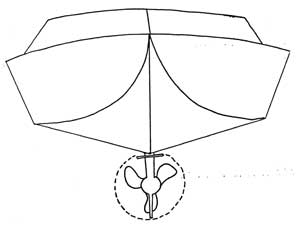
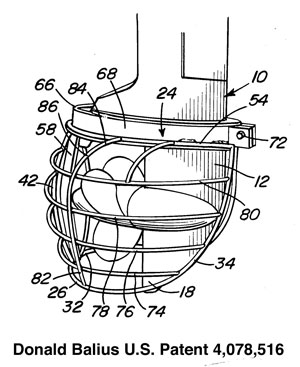
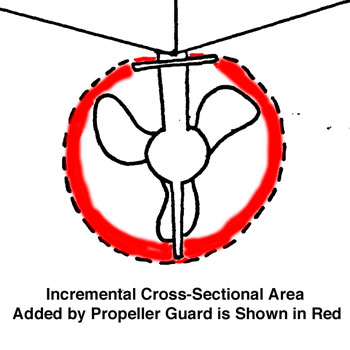
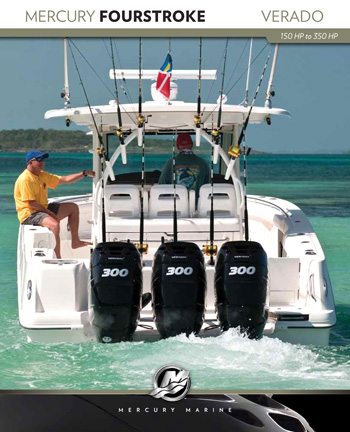
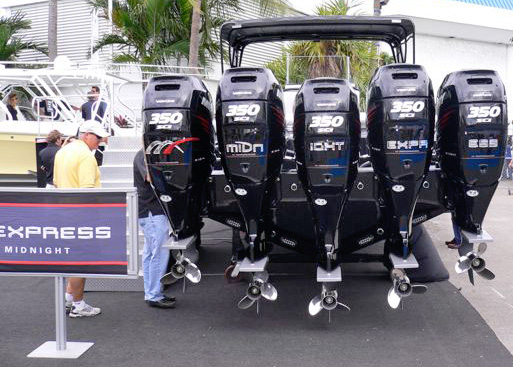
Still, you have to admit those guards sure look ugly…